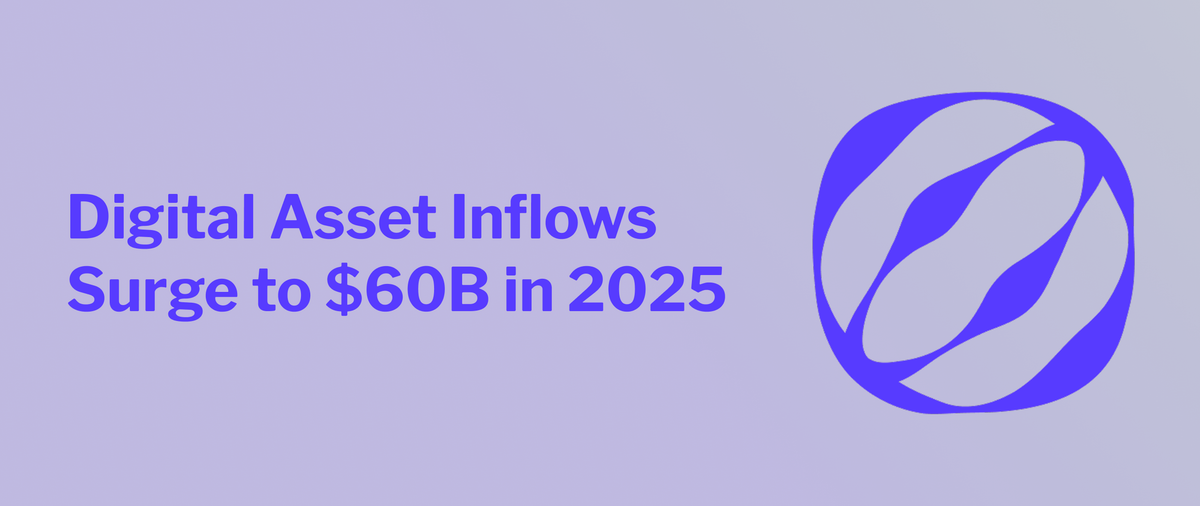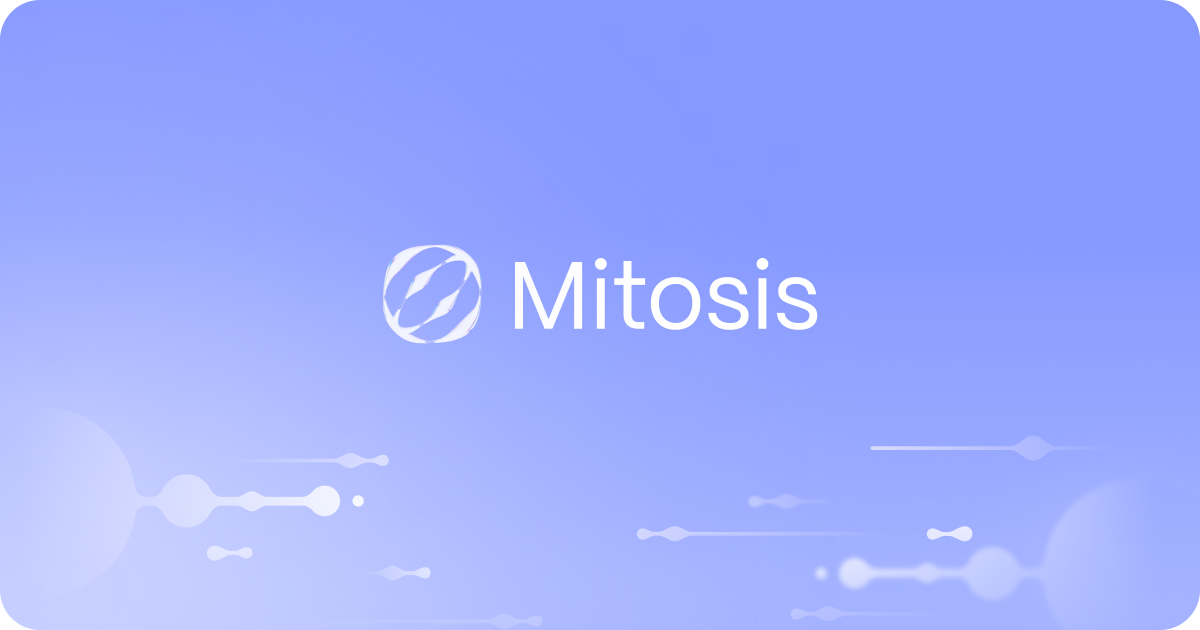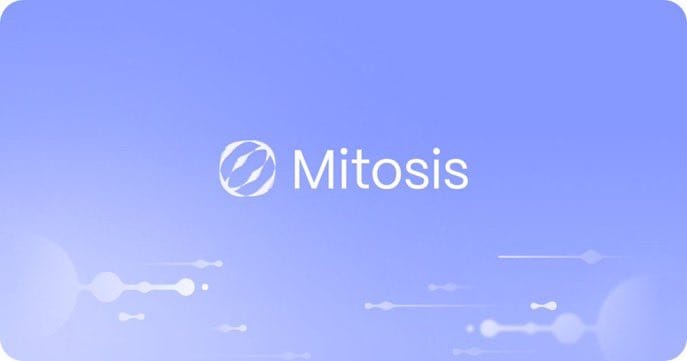Digital Asset Inflows Surge to $60B in 2025: How Regulatory Clarity Is Igniting Crypto and Empowering Mitosis’s Ecosystem

Introduction
Cryptocurrency markets are witnessing a dramatic resurgence in 2024. A recent JPMorgan report highlighted that digital asset inflows have reached $60 billion year-to-date, reflecting a flood of new capital from both institutions and retail investors. This wave of inflows – nearly 50% higher than earlier in the year – marks a sharp reversal from the cautious mood of the last crypto winter. Such robust capital movement signals rapid growth and renewed enthusiasm across the crypto industry. But what’s driving this revival? A major catalyst is the improving regulatory climate in key markets, especially the United States. New U.S. legislation is providing the long-sought clarity on digital assets, attracting venture funding and public interest back into the crypto space. At the same time, frameworks abroad like the European Union’s MiCA (Markets in Crypto-Assets) are setting global standards. This article explores how these regulatory developments – including the U.S. GENIUS and CLARITY Acts – are boosting investor confidence, reviving venture capital, and fueling public market excitement (think Circle’s IPO and altcoin ETFs). We’ll also connect these trends to Mitosis: examining how greater clarity and capital inflows can strengthen Mitosis’s ecosystem of cross-chain liquidity, community governance, and DeFi innovation.

A New Era of Regulatory Clarity: GENIUS Act, CLARITY Act, and MiCA
After years of uncertainty, 2024-2025 is proving to be a turning point for crypto regulation. In the U.S., lawmakers have advanced landmark bills that promise to define the “rules of the road” for digital assets – a welcome shift from the past “Wild West” ambiguity. Two in particular stand out:
- The GENIUS Act (Guiding and Establishing National Innovation for U.S. Stablecoins Act) – a Senate-led bill focusing on stablecoins (digital currencies pegged to assets like the dollar). Passed in mid-2025 with bipartisan support, GENIUS establishes America’s first federal stablecoin regime. It requires stablecoin issuers to maintain 100% reserves in safe assets (e.g. cash or Treasuries) and mandates monthly audits and disclosures. By aligning state and federal rules, the act ends the patchwork of oversight and explicitly protects consumers – even prioritizing redeeming stablecoin holders in any insolvency. The goal is to cement the U.S. dollar’s dominance by legitimizing dollar-backed tokens under clear law. In President Trump’s words, this legislation is bringing “massive investment and innovation” and making America “the undisputed leader in digital assets”. For crypto markets, GENIUS has been a game-changer: providing certainty that regulated stablecoins like USDC or USDT are here to stay and trusted as part of the financial system.
- The Digital Asset Market “CLARITY” Act – a broader market-structure bill moving through Congress in 2025. As the name suggests, the CLARITY Act aims to clearly classify digital assets and delineate regulatory oversight. In essence, it would draw a line between securities and commodities in crypto. Many tokens that achieve sufficient decentralization or utility could be treated more like commodities (overseen by the CFTC), while those that remain investment contracts would fall under SEC securities laws. This clarity is something the industry has craved for years, given the SEC’s case-by-case approach in the past. By setting transparent standards in law, the act is expected to unlock institutional adoption, as funds and companies gain confidence that the assets they’re handling won’t suddenly be deemed unlawful. In fact, analysts have called the CLARITY Act a potential “game changer” for bringing Wall Street off the sidelines. Galaxy Digital and Coinbase, for example, are cited as firms poised to benefit once the act passes, since they’ve built services awaiting clearer regulations. Crucially, U.S. clarity could make the country more attractive for crypto startups compared to jurisdictions abroad.
How does this compare to Europe? The EU’s MiCA (Markets in Crypto-Assets Regulation), approved in 2023 and taking effect in late 2024, has been one of the world’s most comprehensive crypto frameworks. MiCA created uniform rules across all EU member states, covering everything from stablecoin issuers to crypto asset service providers. Its goal is to prevent regulatory arbitrage (forum-shopping) in Europe and ensure high standards of investor protection and market integrity. MiCA’s scope is broad – it regulates utility tokens, payment tokens (including stablecoins), and other crypto-assets not already governed by existing financial law. Notably, it imposes reserve and transparency requirements on stablecoin issuers similar to GENIUS, and licensing requirements for exchanges and custodians. This early clarity in the EU has arguably given European crypto firms a head start in compliance. However, the new U.S. approach may soon steal the spotlight. JPMorgan’s strategists note that the CLARITY Act could make the U.S. even more enticing than MiCA for crypto businesses, by firmly settling the security vs. commodity question and potentially offering a lighter-touch regime for decentralized projects. In other words, regulatory clarity is going global – and as the U.S. and EU implement these frameworks, the confidence to participate in crypto is rising worldwide. The effect is already visible: a friendlier regulatory climate is fueling a resurgence in both private and public crypto markets, according to JPMorgan.

$60B Inflows and Soaring Confidence: Investors Are Rushing Back
Clear rules tend to instill confidence – and the market response this year underscores that. With legislation advancing, capital is pouring into digital assets at a record pace. By mid-2024, net inflows had surged to about $60 billion, far outpacing flows into private equity or credit markets. This figure, which includes crypto fund investments, CME futures activity, and venture funding, already put 2024 on track to beat the previous year’s record for crypto inflows. In contrast to 2022’s deep downturn, sentiment has flipped to bullish – and it’s not just crypto-native funds involved. Institutional investors are tiptoeing back in as the rules crystallize, while retail traders are re-energized by rising asset prices and new investment products.
One area seeing a notable rebound is venture capital (VC). After a lull in 2022-23, VC funding for crypto startups has climbed again in 2024, reflecting renewed risk appetite. Reports show blockchain startups raised about $13.6B in 2024, up from $10B in 2023. Analysts at Galaxy Research attribute this recovery in part to improving regulatory clarity, which is increasing investors’ willingness to back crypto ventures. In fact, venture funding is expected to accelerate further – projections for 2025 exceed $18B – as interest rates ease and the legal fog lifts. We’re already seeing larger and more frequent funding rounds for projects that align with the new compliant landscape (from regulated stablecoins to institutional DeFi platforms). Greater legal certainty is giving VCs and entrepreneurs the green light to innovate again, rekindling the pipeline of Web3 innovation that had slowed during the regulatory crackdowns.
On the public markets side, enthusiasm is equally evident. Consider Circle’s IPO – a watershed moment for the crypto industry. Circle Internet Financial (issuer of the USDC stablecoin) went public on the NYSE in June 2025, becoming the first major stablecoin company to do so. The IPO’s reception was nothing short of stellar: Circle’s stock (ticker CRCL) opened >100% above its IPO price and ended its first trading day at $83, signaling overwhelming demand. As Reuters noted, “Wall Street is clamoring to buy stock in stablecoins” – a remarkable turnaround for an industry that, just a couple years prior, was reeling from stablecoin implosions. Circle’s successful debut was buoyed by the backdrop of the GENIUS Act’s progress (which validated Circle’s business model) and demonstrated that mainstream investors now see regulated stablecoins as a legitimate and lucrative sector. It’s a prime example of regulatory clarity boosting public market confidence: by agreeing to abide by rigorous disclosure and reserve standards, Circle earned trust and attracted blue-chip investors (even Cathie Wood’s ARK Invest committed $150M in the IPO). The IPO not only raised capital for Circle’s growth, but also bridged a gap between traditional finance and crypto, subjecting a crypto firm to the transparency of a public company – a development likely to invite more institutional participation going forward.
Beyond Circle, a flurry of new crypto exchange-traded fund (ETF) filings and products has hit the market, reflecting growing optimism that regulators will approve more diverse crypto offerings. Altcoin ETFs have especially been a hot topic. In the past, anything beyond a Bitcoin ETF was considered unlikely, but 2024-25 has seen momentum for funds targeting other cryptocurrencies (from Ethereum to Solana, and more). Notably, the first U.S.-listed Solana ETF launched in mid-2025, allowing investors to gain exposure to SOL’s price – with staking rewards integrated into the fund’s structure. This staking-enabled ETF model (pioneered by firms like Osprey Funds and REX) means holders not only track the token’s price but also receive yield from on-chain staking of the underlying asset. Such innovation indicates regulators’ openness to crypto beyond Bitcoin, as long as investor protections (custody, disclosures, etc.) are in place. JPMorgan’s report confirms that asset managers are exploring new crypto ETFs tied to various altcoins, signaling rising institutional appetite beyond just Bitcoin. For retail investors, these ETFs lower the barrier to entry for owning and earning from altcoins, which in turn has fed into an altcoin market rally in 2024. Even large-cap tokens like Ethereum have benefited – ETH is increasingly being added to corporate treasuries alongside BTC now, a strong sign that major players view it as a long-term store of value in the post-merge, regulated era. All of these developments – venture funding upticks, IPOs, and novel ETFs – paint the picture of a crypto market reawakening. Regulatory clarity is boosting investor confidence across the board, bringing fresh capital and credibility and ending the investment hesitation that plagued the industry during regulatory crackdowns.

Implications for Mitosis: A Stronger Ecosystem Through Clarity and Capital
What do these macro trends mean for Mitosis and its community? In short, very positive things. Mitosis is a Layer-1 blockchain dedicated to cross-chain liquidity and community-driven DeFi, and it stands to benefit significantly from a more regulated, capital-rich crypto landscape. With more money flowing into crypto and clearer guidelines to operate under, Mitosis’s ecosystem can grow faster and more securely. Here are several key areas in which rising inflows and regulatory clarity intersect with Mitosis’s mission:
1. Community Growth and Governance Empowerment: Regulatory clarity around digital assets can directly strengthen Mitosis’s governance and community participation. One concern for any DeFi project has been the uncertain legal status of governance tokens – would holding or using them invite regulatory trouble? With laws like the CLARITY Act likely differentiating utility tokens from securities, community members can feel more confident engaging with Mitosis’s $MITO token and governance process. Mitosis’s governance model is built on transparency and inclusion: it’s an Ecosystem-Owned Liquidity platform where liquidity providers (LPs) hold miAsset tokens that double as governance votes. This model places decision-making power in the hands of users rather than a centralized team. As regulations validate such decentralized models, we can expect more stakeholders to actively participate in Mitosis’s governance without fear. In fact, Mitosis has pioneered a community-driven DeFi paradigm, enabling users to propose and vote on everything from reward parameters to new chain integrations. Already, the protocol’s DNA Program rewards long-term contributors and voters with enhanced governance weight, ensuring that committed members steer the platform’s evolution. With a friendlier policy environment, this approach gains further legitimacy. More crypto enthusiasts – including those from traditional finance – may join the Mitosis community, knowing that their participation is happening under well-defined legal norms. The result is likely to be broader community development: higher forum activity, diverse viewpoints in proposals, and potentially even institutional players collaborating in governance (for example, venture funds or DAO treasuries voting with their stakes). Mitosis’s forum and DAO framework were designed to be open and educational, turning governance into a collaborative learning process. As new capital and users flow in, that framework will scale, creating a smarter, more robust community to support the project’s growth.
Importantly, clearer regulations also mean Mitosis’s core token economics face less ambiguity. Under GENIUS Act rules, for instance, payment stablecoins are explicitly not securities – a principle that could extend to governance tokens that function primarily within a network. If MITO and miAssets are viewed under law as utility tokens for participating in a decentralized liquidity network (and not investment contracts), it opens doors for exchange listings and institutional holding of these assets. Imagine a U.S. exchange or broker listing MITO because it now meets regulatory criteria – this would greatly broaden access and liquidity for the token, inviting more participants into the ecosystem. In addition, regulatory acceptance can encourage community-led initiatives in a compliant way. For example, Mitosis community members might soon feel confident launching U.S.-based meetups, developer workshops, or even non-profit foundations to support Mitosis, knowing the legal environment is favorable. The overall effect is a virtuous cycle: regulatory clarity builds community trust, which increases participation and innovation on Mitosis, further strengthening the network.
2. Liquidity Influx and DeFi Integrations: Mitosis was created to solve one of DeFi’s biggest pain points – liquidity fragmentation across chains. Its value proposition is even more relevant as capital floods back into crypto. With billions in new inflows, there is a growing need for efficient deployment of that liquidity across many blockchain ecosystems. Mitosis’s protocol is uniquely suited to this task: it unifies liquidity into a single programmable layer that stretches across multiple networks. In practical terms, Mitosis allows users to deposit assets on one chain and have them automatically put to work across other chains to capture yield opportunities, without manual bridging. It introduces concepts like miAssets (modular, cross-chain asset tokens) and Matrix Vaults that dynamically allocate funds to wherever returns are highest. As investor confidence returns, we’re likely to see greater total value locked (TVL) in DeFi platforms – and Mitosis can channel a portion of this capital by offering a one-stop solution for cross-chain yield. For example, an institution that now feels comfortable holding stablecoins thanks to GENIUS Act might allocate a large amount of USDC into Mitosis’s vaults to earn yield on multiple chains. Mitosis’s design of embedding a liquidity marketplace in each connected network means it can deploy those assets simultaneously across ecosystems, enhancing overall capital efficiency. More liquidity in the system also improves Mitosis’s own network security and fees – as LPs provide more funds, the protocol’s volume and revenue can increase, potentially boosting rewards for MITO stakers and LPs. In short, the rising tide of crypto investment directly feeds into Mitosis’s liquidity engine, strengthening its ability to deliver value.
Crucially, regulatory clarity also expands the universe of DeFi integrations available to Mitosis. In a regulatory fog, many DeFi projects and traditional institutions were hesitant to collaborate. Now, with clearer guidelines, we expect more partnerships bridging DeFi and TradFi. Mitosis can serve as a connective tissue in these collaborations. Consider the surge of interest in real-world asset tokenization or regulated DeFi pools – Mitosis’s cross-chain liquidity layer could help route institutional capital (which might originate on permissioned chains or compliant platforms) into various yield-bearing opportunities on public chains, all while respecting any compliance checks. Additionally, Mitosis is built to be chain-agnostic and integration-friendly. It thrives on forging connections with other blockchains and dApps, effectively bootstrapping liquidity for new ecosystems and enabling assets to move freely. As new Layer-1s or Layer-2 rollups launch (and now can do so with regulatory blessings), they can partner with Mitosis to avoid the usual “cold start” liquidity problem. In fact, Mitosis actively fosters relationships with other networks and protocols – for instance, it has explored synergy with Ethereum Layer-2s like Optimism to automatically rebalance liquidity across an interconnected “Superchain” of rollups. In a climate of regulatory certainty, such cross-chain partnerships become easier to execute (no longer slowed by legal doubts), paving the way for a more unified DeFi landscape. Mitosis’s ability to coordinate capital across chains will only grow in importance as institutional money comes in – those players will demand smoother interoperability and risk-managed platforms, exactly what Mitosis aims to provide with its intent-based, automated liquidity management.
3. Enhanced Cross-Chain Bridging and Innovation: With the broader crypto market now on an upswing, innovation is accelerating – and Mitosis stands at the crossroads of several major trends. One is the push for better cross-chain bridges and interoperability solutions. The frustrations of the past (high bridge fees, hacks, and slow transfers) are no longer acceptable as more users and value enter the space. Mitosis addresses this by using a secure messaging layer (Hyperlane) to move liquidity without custodial bridges. It effectively abstracts away the complexity of bridging for users. As more capital flows, the demand for such seamless cross-chain experiences will skyrocket. We can anticipate Mitosis playing a key role in major bridging initiatives – for example, connecting liquidity between compliant on-chain environments (like a U.S.-regulated exchange chain) and the broader DeFi multiverse. The community is already thinking in this direction. In Mitosis’s governance forum, contributors have floated ideas like cost-effective bridging solutions to reduce fees for users moving funds between chains. Thanks to the community-driven model, when the need for a new feature or integration arises, Mitosis’s users can propose it and vote to implement. The influx of fresh perspectives (new community members drawn in by the bull market and clarity) will likely produce innovative proposals that expand Mitosis’s capabilities – whether it’s supporting a new prominent blockchain, integrating a popular DeFi protocol from another ecosystem, or improving the speed of cross-chain swaps. In short, regulatory clarity and new capital empower the community to dream bigger. Mitosis’s decentralized governance ensures that the best ideas – from integrating a hot new altcoin for cross-chain yield to adjusting parameters for safer operation – can be executed, keeping the protocol at the cutting edge of DeFi.
Furthermore, as investor optimism grows, ecosystem expansion for Mitosis becomes much easier. Projects and developers are more willing to build on or alongside Mitosis now. We may see entirely new dApps leveraging Mitosis’s liquidity layer (e.g. a cross-chain lending platform that uses miAssets as collateral, or a yield aggregator that plugs into Mitosis vaults across chains). Mitosis’s own roadmap can become more ambitious with the backing of a healthy market – for instance, pursuing integrations with traditional finance rails. It’s not far-fetched to imagine a future where Mitosis provides the bridge for tokenized real-world assets or even central bank digital currencies (CBDCs) to interact with DeFi. GENIUS Act’s emphasis on stablecoins as part of national strategy suggests that regulated digital dollars will proliferate. Mitosis could potentially partner with a major stablecoin issuer or bank consortium to ensure those assets can seamlessly travel between chains and find yield in DeFi protocols. All these avenues are more attainable when regulators are not casting doubt on the legitimacy of such activities. In essence, Mitosis’s vision of a unified, chain-agnostic liquidity layer aligns perfectly with where the post-regulation market is heading – a landscape of many interoperable networks with heavy institutional involvement. By staying compliant and focusing on security and community governance, Mitosis positions itself as critical infrastructure in this new landscape. The project’s philosophy of “liquidity as a public good” resonates strongly now that the industry is moving past speculation into real-world utility. Every new dollar or stablecoin that enters crypto is a candidate to become productive liquidity through Mitosis, and every new piece of regulation that solidifies crypto’s future gives Mitosis more runway to grow confidently.

Conclusion & Key Takeaways
The confluence of record-breaking capital inflows and regulatory breakthroughs in 2024 has set the stage for a more mature and expansive crypto ecosystem. Investors who were once skittish have returned in force, evidenced by $60B+ pouring into digital assets on the back of clearer rules. In the U.S., the GENIUS Act and CLARITY Act are providing exactly what the market needed – bright lines around stablecoins and asset classifications – which in turn is unleashing both Wall Street and Silicon Valley interest in crypto. Europe’s MiCA and similar efforts worldwide add to this foundation of legitimacy. All these factors are boosting confidence for institutions and retail participants alike, translating into tangible market enthusiasm: venture funding is rebounding, new crypto ETFs are launching, and major firms like Circle are confidently going public.
For Mitosis, these developments aren’t just headline fodder – they’re directly accelerating the project’s mission. Regulatory clarity means Mitosis’s community-governed, cross-chain approach can thrive without legal cloudiness, attracting more users and partners. And rising capital flows mean more liquidity to unify, more networks to connect, and more opportunities to innovate in DeFi. Mitosis’s ecosystem of programmable liquidity and community-driven governance is poised to blossom as blockchain moves into this next, more mainstream phase. By aligning with the new standards (transparency, security, and user protection) and continuing to empower its community, Mitosis can serve as a bridge not only across chains but between the ideals of decentralized finance and the practical demands of institutional adoption. The stage is set for Mitosis to grow exponentially, leveraging the momentum of an industry that’s finally finding its footing in the halls of finance and regulation.
Practical Takeaways:
- Regulatory clarity is fueling crypto growth: New laws in the U.S. (like the GENIUS Act for stablecoins and the CLARITY Act for digital assets) and frameworks in the EU (MiCA) have removed much uncertainty. This has boosted investor confidence, leading to a surge of capital into crypto in 2024. Clear rules around what’s allowed are encouraging institutions and individuals to engage with digital assets rather than sit on the sidelines.
- Capital inflows and interest are at multi-year highs: Roughly $60B in net inflows hit digital assets year-to-date, outpacing other sectors and on track to set records. Venture capital funding in crypto is recovering (2024 volumes up significantly from 2023) and could grow another ~50% in 2025 with improved regulatory conditions. At the same time, public market enthusiasm is evident – for example, Circle’s IPO saw overwhelming demand, indicating mainstream investors are eager for exposure to compliant crypto businesses.
- Market expansion beyond Bitcoin: With the climate turning positive, investors are branching out beyond just Bitcoin. Ether (ETH) is gaining recognition as a core asset (even appearing in corporate treasuries alongside BTC) and altcoin-focused ETFs have debuted, some even offering staking yields to investors. This points to a broadening crypto market where multiple networks and tokens attract significant interest under the umbrella of regulatory oversight.
- Mitosis stands to benefit immensely: These trends reinforce Mitosis’s strategy of unifying and deploying liquidity across chains. More stablecoin usage (thanks to GENIUS Act safeguards) means more fuel for Mitosis vaults. Greater institutional adoption means an increased need for cross-chain liquidity management, which is Mitosis’s specialty. Additionally, regulatory clarity around tokens can increase participation in Mitosis’s governance – empowering the community to grow and make bolder decisions without legal doubts. In short, clarity + capital = a stronger foundation for Mitosis’s ecosystem growth.
- Future outlook – synergy of clarity and innovation: As crypto enters a more regulated era, projects that embrace compliance while delivering innovation (like Mitosis) are likely to become key pillars of the ecosystem. We expect Mitosis to continue expanding – integrating more chains, attracting diverse liquidity, and collaborating with both DeFi and traditional finance partners. With its community-driven approach and technical prowess in bridging liquidity, Mitosis is well positioned to help shape the next chapter of blockchain – one where decentralized finance and mainstream finance converge, backed by the confidence that clear rules and robust capital bring.
Useful links:












Comments ()